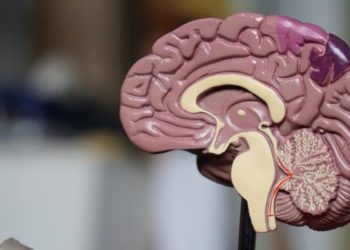Hands-on ophthalmic training for medical students may improve knowledge base
Image: PD
1. Students previously trained and who participated in service experience had a median exam score of 81% compared to 33% among untrained students and 44% among internal medicine residents (p<0.001).
2. These differences appear to disappear by 1 month and 1 year (p=0.24 and 0.11 respectively).
Evidence Rating Level: 3 (Average)
Study Rundown: This study suggests a valuable method by which medical students can gain reasonable knowledge of ophthalmology, which has become a challenge in current medical education. The authors propose the use of a high-volume mobile eye clinic to provide hands-on application of knowledge gained through training sessions. This led to a 48% higher score on the subsequent exam compared to untrained students and 33% higher score compared to residents. However, this significant difference appears to disappear after 1 month and at 1 year. While ophthalmoscopy scores were not significantly different at these times, it is still important to note that the absolute percentage was still higher with second-year trained students. Limitations include the overall sample size, as only a small group of students were used. Larger sample groups for assessing long-term retention might have led to statistical significance; it is unclear from the study whether there were barriers to doing so. Nonetheless, the authors appropriately used median scores due to small sample size and a non-normal distribution. They also ensured that student interest in pursuing ophthalmology was not a confounder.
Click to read the study in JAMA Ophthalmology
Relevant Reading: Medical student education in ophthalmology: crisis and opportunity
In-Depth [prospective study]: Ophthalmology has been significantly marginalized in medical school curriculums over the past decade or so, making it challenging to ensure medical students receive basic education in this area. In this study, 12 second-year medical students at the University of New Mexico received additional teaching on eye anatomy and common pathology. They also were taught how to measure visual acuity, check intraocular pressure, and visualize the fundus using direct ophthalmoscopy. They subsequently served as part of the Community Vision Project, a mobile eye clinic that provides care to underserved populations in New Mexico. A written examination was then used to test their knowledge, which was also administered to 18 second-years who did not receive such training and 33 internal medicine residents. Authors found that trained students had a median score of 81% compared to 33% among untrained students and 44% among residents (p<0.001). A subset of students from each group was randomly selected and subsequently tested for ophthalmoscopy skills at 1 month and 1 year after the initial training and service experience to gauge long-term retention. Median scores of trained students were 60% compared to 40% of upperclassmen (p=0.24). Long-term assessment showed no significant difference in scores (p=0.11).
By Swarup Swaminathan and Andrew Bishara
More from this author: Argus II retinal prosthesis significantly improves spatial vision in blind patients, Artificial cornea is well retained in patients with ocular surface disease, High prevalence of undiagnosed glaucoma in West Africa, Interferon therapy is superior to methotrexate for uveitis, Rho kinase inhibitor safely reduces intraocular pressure
©2012-2013 2minutemedicine.com. All rights reserved. No works may be reproduced without expressed written consent from 2minutemedicine.com. Disclaimer: We present factual information directly from peer reviewed medical journals. No post should be construed as medical advice and is not intended as such by the authors, editors, staff or by 2minutemedicine.com. PLEASE SEE A HEALTHCARE PROVIDER IN YOUR AREA IF YOU SEEK MEDICAL ADVICE OF ANY SORT.




